Lenovo ThinkPad X1 Fold 16 Gen 1 review: the best foldable laptop is still searching for its purpose
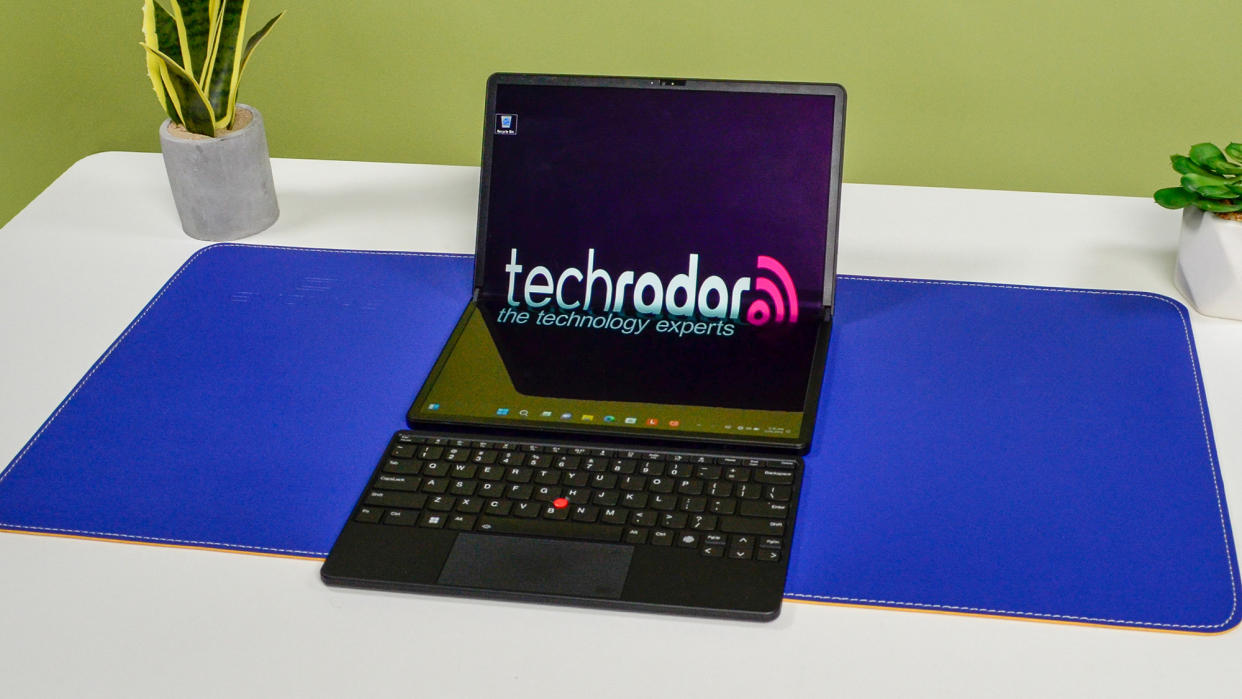
Lenovo ThinkPad X1 Fold 16 Gen 1: Two-minute review
Lenovo keeps trying to make foldable PCs happen, and to its credit, the Lenovo ThinkPad X1 Fold 16 Gen 1 makes a strong case that the foldable laptop is a viable form factor after all.
The new X1 Fold 16 officially follows up the original Lenovo ThinkPad X1 Fold I reviewed back in 2020, and I have very mixed feelings about this device, to say the least. For one, let's just get the price out of the way. The X1 Fold 16 Gen 1 is available now and starts at $2,499.99 (about £2,000/AU$3,500), which immediately makes this a very premium device, even for the business user who is most likely to want to pick one up.
Increase the specs and you're going to quickly ring up quite a bill at checkout. Oh, and on the US base configuration, the Bluetooth keyboard and stand are an optional, $300 purchasable upgrade, though the UK base configuration does include it in the cost of purchase.
But ThinkPads are typically some of the best business laptops, and many business users are going to expense this device, so the sticker shock might not be as heavy as it would be for the average consumer. And what you're getting for the money is genuinely innovative in a way that we really haven't seen in the mobile computing market in a long while.
Part of that innovation here is the versatility this device offers users. Want a laptop in portrait mode for documents or coding? Done. Want a clamshell device that you can use in rather tight confines, like an economy seat on a domestic flight? Also done. Want a professional tablet you can use to sketch or mark-up documents with a stylus? The X1 Fold 16 has that covered too.
And unlike the absolutely dreadful Intel Lakefield chip in the original X1 Fold that could barely run two apps at once, the 12th-gen Intel Core U-series processors in the X1 Fold 16 Gen 1 are very solid chips for productivity and light multimedia work, so you don't run into similar frustrations as the earliest X1 Fold adopters are likely to be dealing with right now.
You also get a device that is well-built (except the add-on keyboard and stand, they've got some issues), looks great thanks to its 2560 x 2024 OLED display, and is lightweight and portable enough to tuck into bags that would normally balk at trying to squeeze in a laptop. I have opinions on the redesign that I'll get into in a bit, but on its merits, it's an eye-catching device that you'll be able to easily show off in an airport lounge.
The only question is whether there is really a market for this kind of device right now, and that's not really clear just yet. At $2,500 to start, buying the Lenovo ThinkPad X1 Fold 16 Gen 1 is going to be something of a gamble for a lot of users, but it will at least deliver you a decent amount of performance so it will still be a good laptop hybrid device once the initial novelty of its foldable screen wears off.
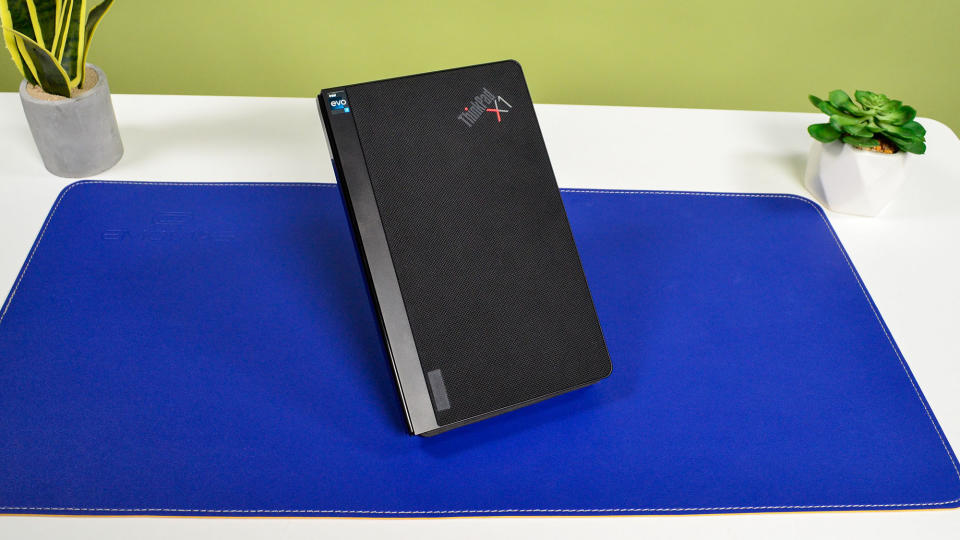
Lenovo ThinkPad X1 Fold 16 Gen 1: Price & availability
The Lenovo ThinkPad X1 Fold 16 Gen 1 is available now in the US and UK, but it doesn't look like it's available in Australia yet, so I have reached out to Lenovo for clarification on regional availability and will update this review if and when I hear back from the company.
Starting at $2,499.99 in the US, and £4,389 in the UK, the base configurations come with an Intel Core i5-1230U processor with Intel Iris Xe graphics, 16GB LPDDR5 RAM, and a 256GB SSD. There are several configurable options on the X1 Fold 16, but the max spec includes an Intel Core i7-1260U processor with Intel Iris Xe graphics, 32GB LPDDR5 RAM, and 1TB SSD, all of which will run you $3,694 in the US and £4709 in the UK—and that's before any additional upgrades like Windows 11 Pro or additional security software subscriptions.
Compare this to the Asus Zenbook 17 Fold OLED, which is the only other major foldable laptop on sale right now, and the Lenovo ThinkPad X1 Fold 16 Gen 1 is the cheaper of the two in the US by about $1,000 but is more expensive in the UK by about £1,100. In addition, both devices have very similar specs, so you'll have to fiddle with the configurations on each to see which makes the most sense for your budget.
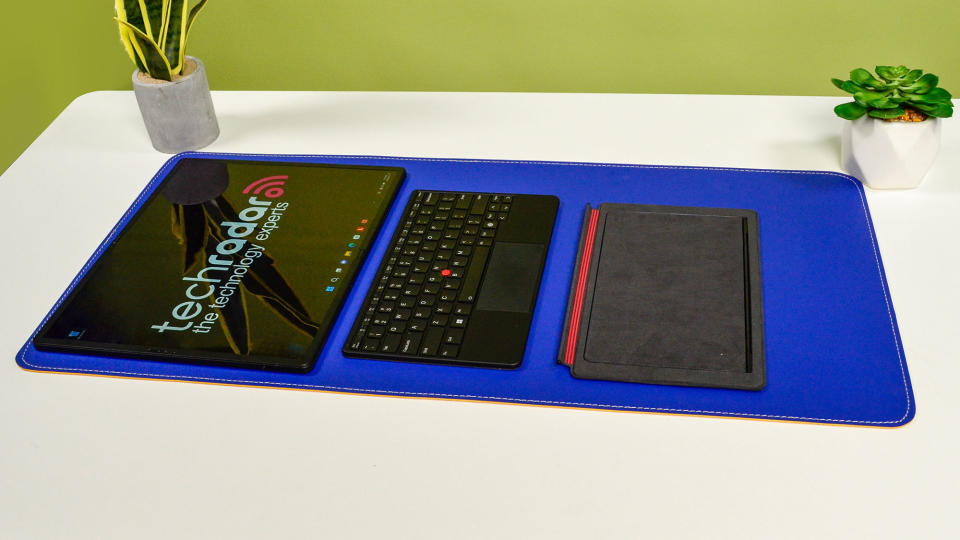
Lenovo ThinkPad X1 Fold 16 Gen 1: Specs
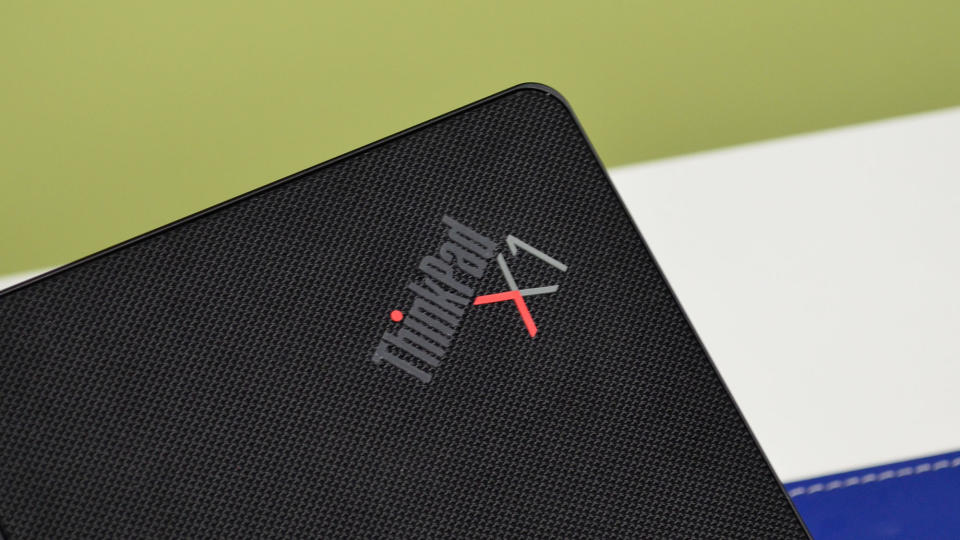
Lenovo ThinkPad X1 Fold 16 Gen 1: Design
Ok, so about this design.
First thing's first, the OLED display is gorgeous and bright, getting well above 100% of the sRGB color gamut, and its touchscreen response is snappy. The fold in the middle doesn't have any physical signs of crinkle or anything like that, but I haven't been using it for over a year, so whether the screen holds up remains to be seen.
Folding the laptop closed, you get a device that looks a lot like a big black book, with only the rubber ThinkPad X1 and Lenovo badges, and Intel Evo emblem to hint at its purpose. The textured exterior (made from Recycled PET Woven Performance fabric) runs into the aluminum 'spine' of the laptop where the hinge mechanism is, and if you have the keyboard folio, it magnetically attaches to the underside of the device, which does provide something of a cushion for the laptop to rest on.
The included Lenovo Precision Pen also magnetically connects to the side of the device, so bundling everything up and taking it with you is an easy enough process, especially given that the magnets are strong enough that they aren't likely to pop off willy-nilly.
Sounds great, and I appreciate Lenovo going with some more sustainable materials here rather than the synthetic leather of the original X1 Fold. But a part of me is sad to see the leather binding go. For all of the original X1 Fold's myriad faults, it was genuinely a work of art, design-wise.
But, we're not here to play around in an English department lounge, we're here to work, and for a business-facing device, the ThinkPad X1 Fold 16 is easily the most beautiful device I've seen in a long time.
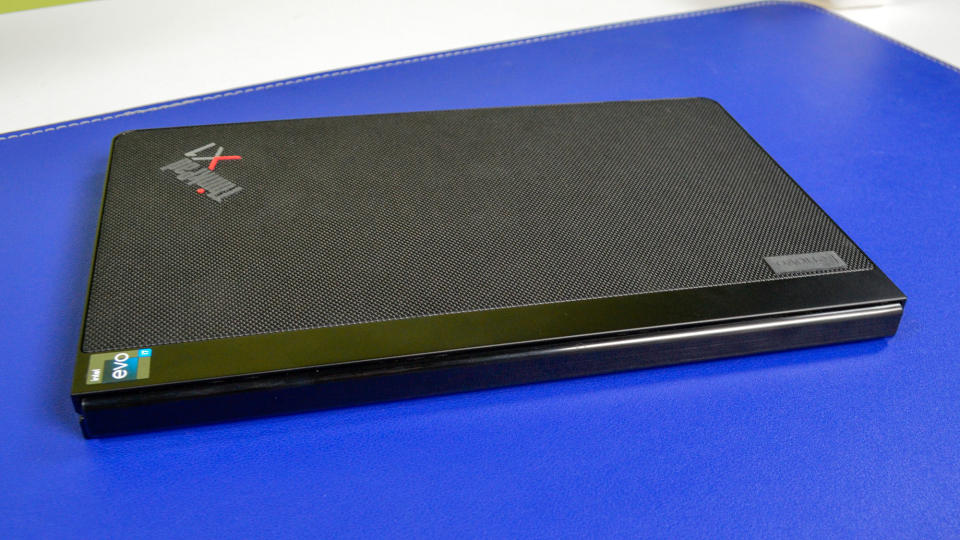
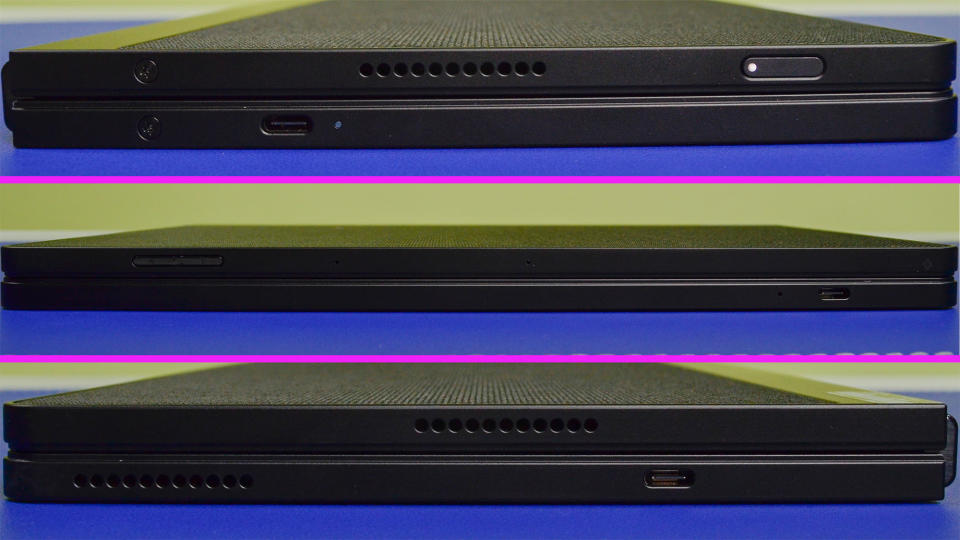
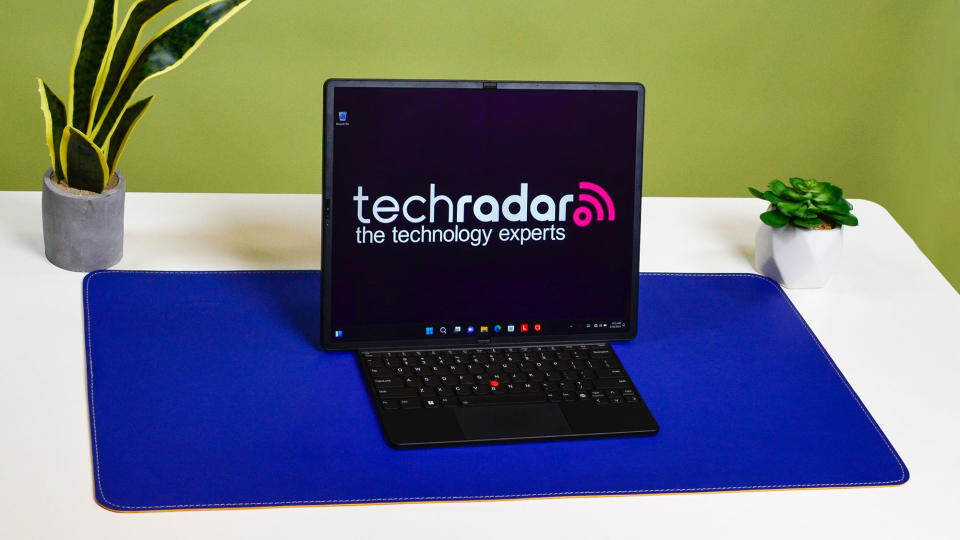
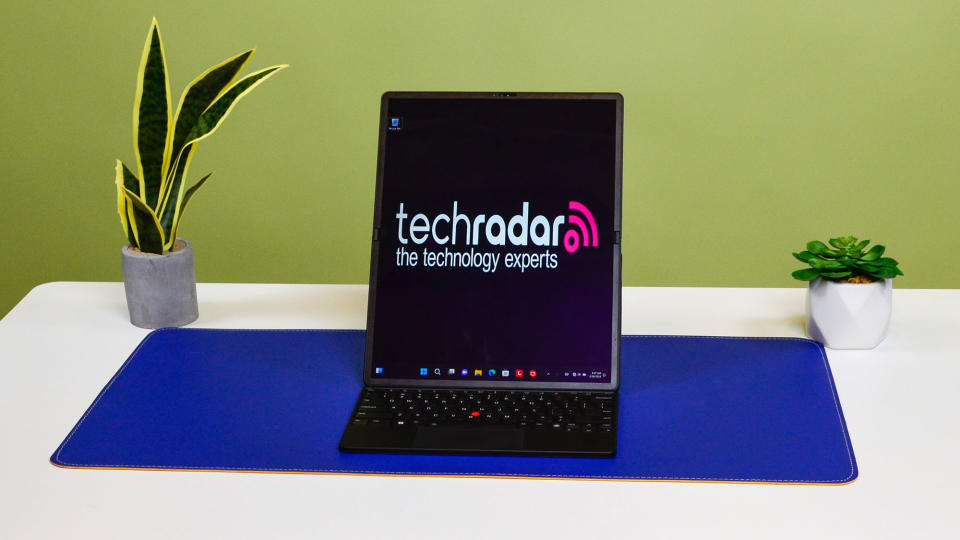
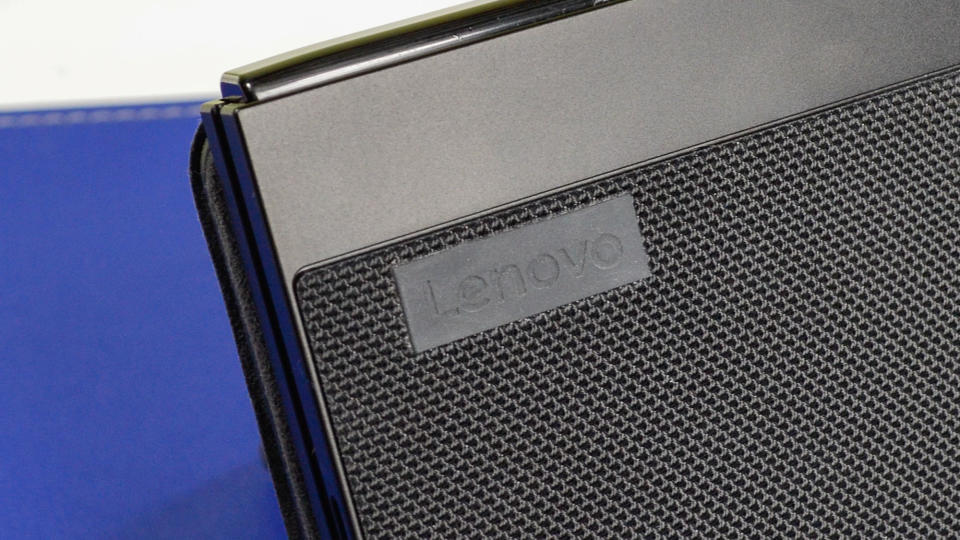
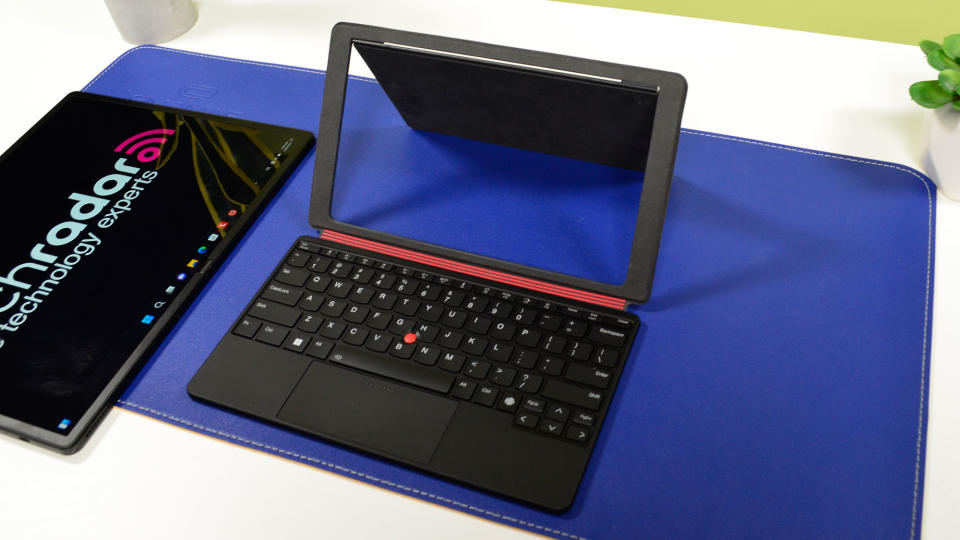
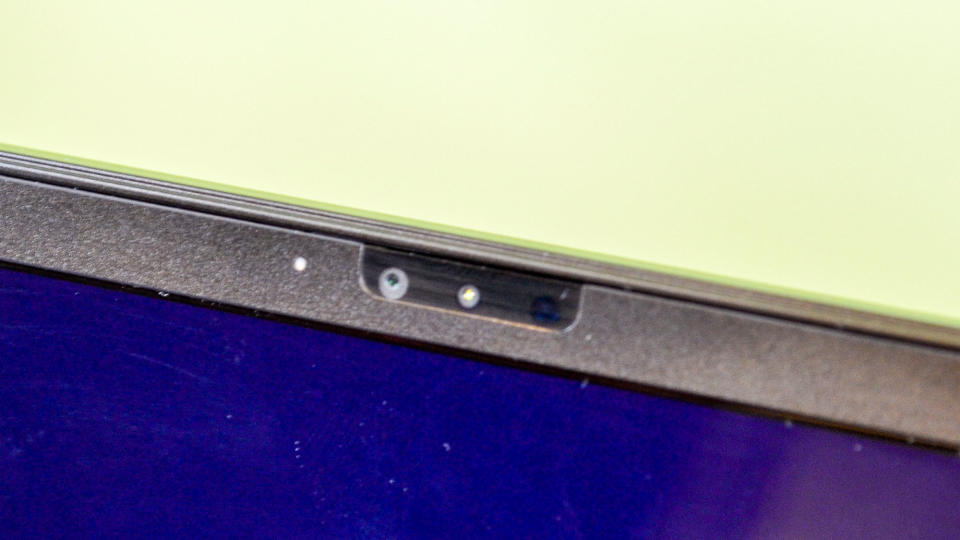
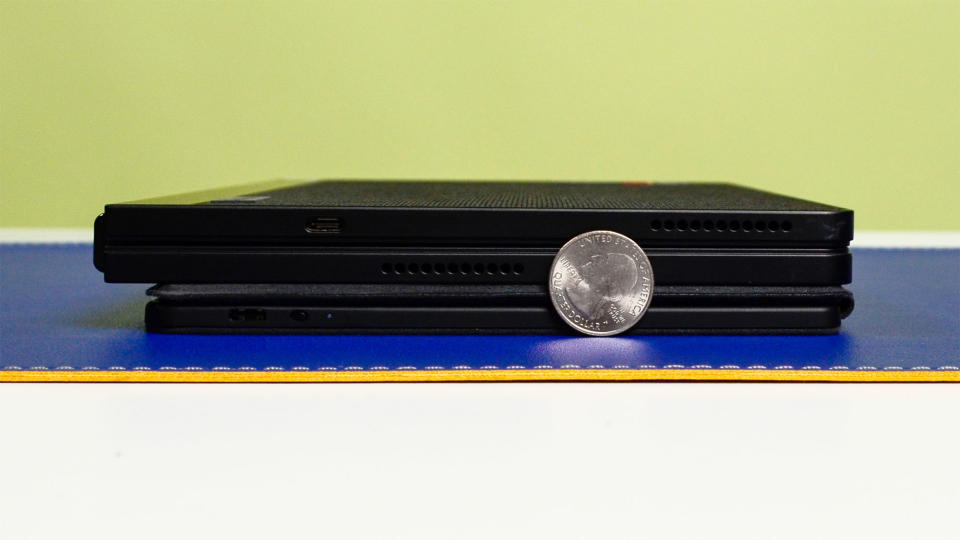
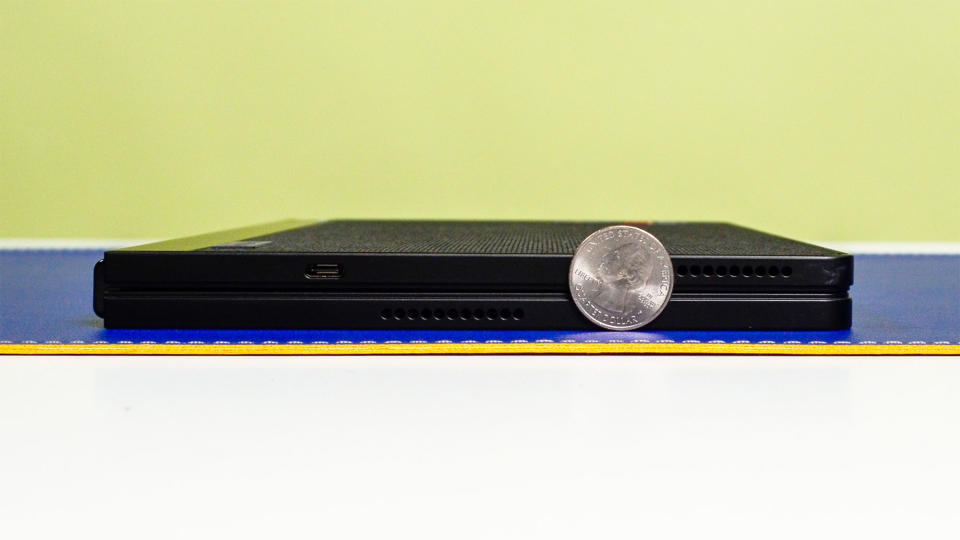
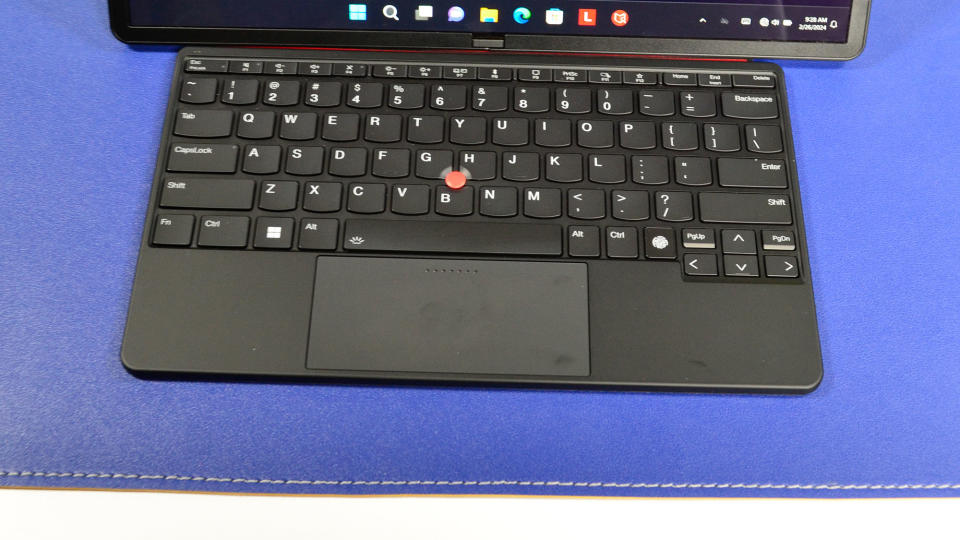
As for ports and features, ports are understandably limited given the form factor, but you do get two Thunderbolt 4 and one USB-C 3.2 Gen 2 ports, so you do have some space for you docks, peripherals, and charging cables.
The webcam is a 5MP infrared that sits at the 'top' edge of the display when held in portrait mode, and along the side when in landscape. This is going to make your positioning during conference calls awkward at times, no doubt, but the biggest issue is the lack of a physical privacy shutter, which is heresy for a ThinkPad. I can understand the difficulty of finding a way to fit one into the form factor, but that and the lack of on-device fingerprint scanning does make this somewhat less secure than other ThinkPads.
Lastly, the keyboard folio is a $300 add on in the US, but it sure as heck doesn't feel like it. The thin Bluetooth keyboard feels like some very stiff cardboard wrapped in a soft fabric. The keys are cramped and there are times when the keyboard had issues pairing with the X1 Fold 16, though I eventually got it to work. The laptop stand, meanwhile, often does a poor job of actually holding the laptop up while you're using it, which isn't great. Given how much you're spending on this laptop, only buy the keyboard folio if you absolutely must have the convenience of magnetic attachment and getting this device squeezed into the lightest of the best laptop bags. There are better tablet stand-keyboard holders out there, so better to buy those as they'll probably work better in the long run.
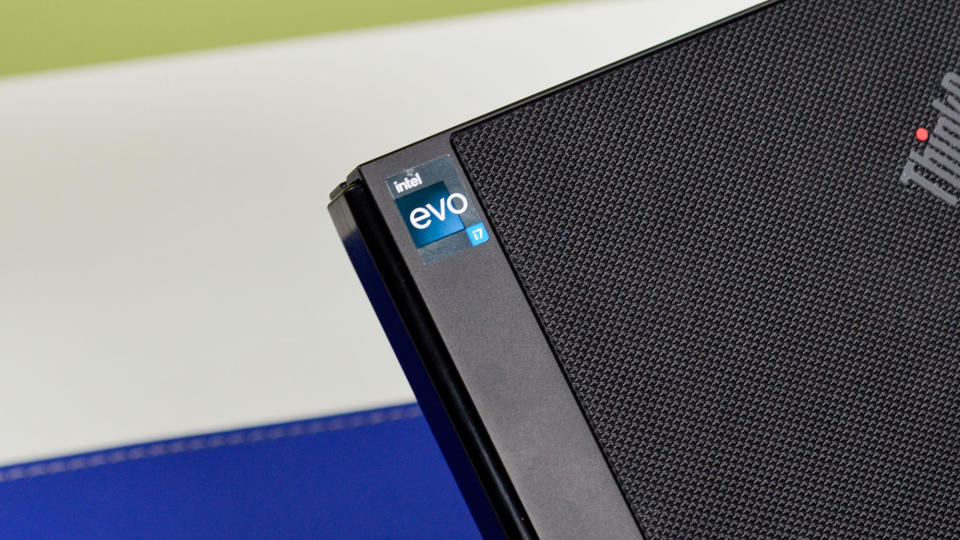
Lenovo ThinkPad X1 Fold 16 Gen 1: Performance
Benchmarks
Here's how the Lenovo ThinkPad X1 Fold 16 Gen 1 performed in our suite of benchmark:
Geekbench 6 Multi: 7,715; Single: 2,272
Crossmark Overall: 1,414; Productivity: 1,412; Creativity: 1,477; Responsiveness: 1,246
3DMark Night Raid: 13,156; Fire Strike: 3,886; Time Spy: 1,391;
Web Surfing Battery Test (Tablet Mode): 7 hours 27 minutes; (Laptop Mode): 8 hours 51 minutes
So the performance on the X1 Fold 16 Gen 1 is, again, a mixed bag. On the one hand, its performance is lightyears ahead of its predecessor, but as a 12th-gen Intel chip, it is significantly behind where the market is right now in terms of performance.
To be clear, you can still get your work done just fine on a 12th-gen Intel chip in 2024, lots of people do it, and given the slowing pace of raw processing power gen-on-gen, buying a 12th-gen chip right now isn't going to suddenly be obsolete in three years the way it might have been a decade ago.
If you're looking to get productivity work done and that's your primary purpose for this device, with a side of video streaming and web browsing, even a 12th-gen chip might be too much processing power for your needs.
But it's not the best Lenovo ThinkPad we've tested, not by a long shot. This one is still going to be a slower laptop than others on the market right now, so you really have to want the foldable form factor to justify the trade-off in performance. If you're ok with that, godspeed, but if you actually need a high-performance ThinkPad, you are going to be disappointed with the X1 Fold 16—especially considering the price tag.
Lenovo ThinkPad X1 Fold 16 Gen 1: Battery Life
The battery life on the ThinkPad X1 Fold 16 is decent enough, and I suspect this is why Lenovo (and Asus) went with 12th-gen U-series chips rather than a then-current 13th-gen or one of the new Intel Core Ultras.
In tablet mode, the X1 Fold 16 got about 7 hours and 27 minutes of battery life in our web surfing test. In laptop mode, it did much better, getting just shy of nine hours of use.
The 64WHr combined battery (there are actually two batteries in the X1 Fold, a 48WHr and a 16WHr, one on each side of the fold), definitely helps here, especially since Intel's 12th-gen chips are very power hungry.
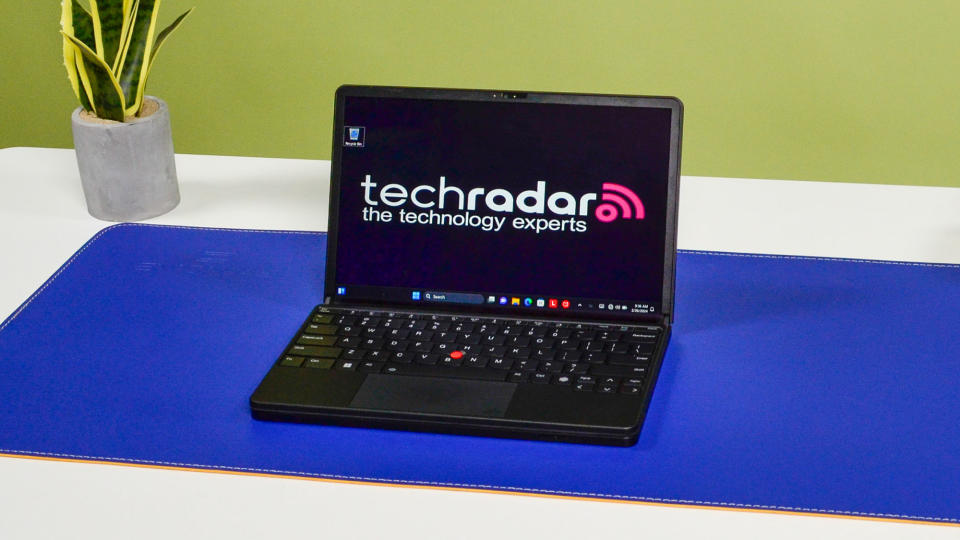
Should you buy the Lenovo ThinkPad X1 Fold 16 Gen 1?
Buy the Lenovo ThinkPad X1 Fold 16 Gen 1 if...
Don't buy it if...
First reviewed February 2024
